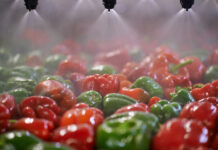Nestlé’s products for babies in Asia, Africa and Latin America were found to contain added sugars, while the same products sold in Europe did not, according to a recent report by a Swiss NGO, the Public Eye and International Baby Food Action Network (IBFAN).
The report “How Nestlé gets children hooked on sugar in lower-income countries” faulted Nestlé for employing different nutritional standards in its offerings, depending on the country it served. Nestlé also did not make the quantity of sugar content clear on the products’ packaging, it said.
Around 150 baby products manufactured by the global food and beverage giant and sold in different countries were tested in a Belgian laboratory, according to IBFAN. It was found that all 15 Cerelac products for six-month-old babies, which are sold without any added sugars in the United Kingdom and Germany, contained 2.7 grams of added sugar per serving in India. Products sold in Ethiopia and Thailand contained nearly 6 grams, the report said.
In clarification Abneesh Roy, executive director, Nuvama Institutional Equities, told The Indian Express, “We do not see any significant impact of the sugar in baby food issue on the sales of Nestlé’s products in India because the company has reduced sugar content in the last five years by 30% in Indian products. My sense is they will keep doing that. Indian paediatricians are saying that below two years, there should not be any added sugars. I expect that Nestle will keep on doing the local R&D to reduce this further.”
FSSAI, the apex regulatory body for the food business, said it would examine the findings and submit the outcome with the in-house scientific panel for further action.
IndiFoodBev — authentic, impactful and influential
An English-language food and beverage processing and packaging industry B2B platform in print and web, IndiFoodBev is in its third year of publication. It is said that the Indian food and beverage industries represent approximately US$ 900 billion in revenues which implies more than 20% of the country’s GDP. Eliminating the wastage on the farmside can help to deliver more protein to a higher number of the population apart from generating sizable exports. The savings in soil, seeds, water, fertilizer, energy and ultimately food and nutrition could be the most immense contribution that country is poised to make to the moderation of climate change.
To improve your marketing and grow sales to the food and beverage processing and packaging industry, talk to us. Our research and consulting company IppStar [www.ippstar.org] can assess your potential and addressable markets in light of the competition. We can discuss marketing, communication, and sales strategies for market entry and growth.
Suppliers and service providers with a strategy and budget for targeted marketing can discuss using our hybrid print, web, video, and social media channels to create brand recognition linked to market relevance. Our technical writers are ready to meet you and your customers for content.
The second largest producer of fruit and vegetables in the world is continuously expanding processing capacities and delivery systems with appropriate innovative technologies. We cover product and consumer trends, nutrition, processing, research, equipment and packaging from farm to thali. Get our 2025 media kit and recalibrate your role in this dynamic market. Enhance your visibility and relevance to existing markets and turn potential customers into conversations. Ask for a sample copy of our bi-monthly in print or our weekly IndiFoodBev eZine each Wednesday.
For editorial info@ippgroup.in — for advertisement ads1@ippgroup.in and for subscriptions subscription@ippgroup.in
Naresh Khanna – 10 February 2025
Subscribe Now











